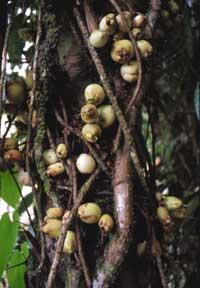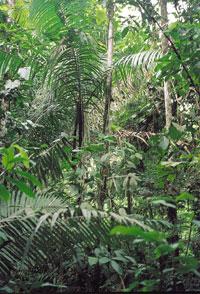Tropical forests in money
2000/07/02 Carton Virto, Eider - Elhuyar Zientzia
conservation, despite offering economic benefits to locals and the world at large, does not generate returns to the individual fears considered. After analyzing the case of the Masoala National Park of Madagascar, these are the results published in the scientific journal Science. The research has had the participation of environmentalists and economists that tropical forests have a future in the economy.
Every year 13 million hectares of forests are destroyed in the world, 5.6 and 8.6 tons of CO2 are emitted into the atmosphere and between 14,000 and 40,000 species disappear in tropical forests. Due to greenhouse gases, the temperature of the Earth in the next century can increase between 1 and 4 ° C. Violent landings, floods, invasions and extinctions of species are the characteristics of a warmer planet. This will cause significant economic damage. In line with these economic impacts, some environmentalists intend to establish ways to conserve the environment.
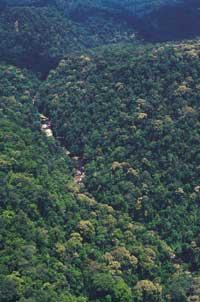
Between 20 and 30% of greenhouse gas emissions into the atmosphere come from deforestation of tropical forests. On the other hand, most of the world's species, which are the most abundant, are becoming extinct in these forests. Tropical forest conservation could reduce biodiversity loss and greenhouse effect. However, despite efforts, many of the "protected spaces" of the tropics are degrading, while the homeless are becoming wood and field. To address all this, many propose to give economic value to conservation, which is what has been discussed in the aforementioned article. Standford researchers have modeled the Masoala Natural Park of Madagascar, ideal for economic evaluation and analysis at local, national and global levels.
The
2,300 km2 Masoala National Park is a rain forest. The park is surrounded by a 1,000 km2 forest ring that is not protected. The timber industry annually extracts tons of wood, but is not solely responsible for deforestation. Farmers cut and burn trees to have land to plant, build houses, etc. Roads built and used by wood companies also facilitate access to forests. As a result, farmers can reach the interior without major difficulties and burn and cut more trees. Thus, the problem of deforestation caused by companies increases.
Sustainable development
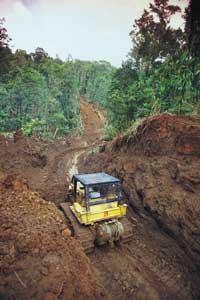
The biggest
threat to Masoala Park is farmers who need rice crops, because in order to plant the rice they need to live, they burn and cut down the trees. It is estimated that in less than 10 years farmers can reach the heart of the park. In order to curb the destruction, the managers of the Park intend to economically encourage conservation. But is it profitable to do so?
Yes and no. Forest conservation can be profitable for villagers closely linked to the forest. According to the researchers, cutting down trees and the amazing field would allow villagers to earn a profit of $12,000 at age 10. But if we keep the forest, the benefit would be $200,000. The population uses the forest to cover roofs, build canoes, obtain medicinal herbs, etc. Also, do not forget the sale of forest products and tourism. Giving economic value to all this, we obtain, at least locally, the aforementioned positive balance sheet.
Something similar happens worldwide. Every ton of carbon that will not be emitted into the atmosphere by experts has been valued at $20, that is, for every ton of carbon that is not emitted, the world economy would earn $20 in 10 years. According to this, the conservation of Masoala Park would allow the world economy to earn or save $180 million. When the same calculations are made at the national level, the balance is totally different: if the wood of the natural park is sold abroad, Madagascar would earn 90 million dollars. At the national level it is more profitable to offer timber companies than to conserve forests. An example of this is the confrontations with the declaration of the Natural Park of Masoala. If in 1997 the government of Madagascar was willing to entrust that piece of forest to a wood company and it would not have been for the pressure of conservationists and diplomats, it would have lost such an important region from the point of view of biodiversity. In return for the park's statement, the World Bank pays the Madagascar government an amount of money per hectare of preserved forest.
For developing
countries it is very difficult to reject timber companies, which are a safe and abundant source of income. Although forest conservation ensures long-term benefits, they must develop in the short term. How then do we believe that conservation also influences the short term? How to combine development and conservation?
Clean Development Mechanism

The Kyoto
protocol agreed in 1997 proposed a mechanism that could be valid to address this problem, the Clean Development Mechanism (CDM). To combat the greenhouse effect in Kyoto, it was agreed to reduce carbon dioxide emissions. More than 60% of the issue corresponds to Europe and the United States, so both countries committed to a significant reduction. But because the objectives are difficult to meet, a second reduction route was proposed. Industrialized countries can reduce carbon dioxide emissions in two ways: emitting less or installing windmills, solar panels, etc. in developing countries. This second option is called "carbon credit": one country does not restrict, but another does not emit more and the balance is zero; the second country receives money in return. As the paying country is usually industrialized and the charging country is in development, the second can allocate the money raised to development.
Two-thirds of the carbon dioxide we emit into the atmosphere come from fossil fuels, so initiatives to promote clean energy are very useful. But the other 20-30% of what we emit comes, as we have said, from the burning of rainforests. 50% of the trees in these forests are carbon and 32 tons of carbon dioxide per hectare of forest that burns to the atmosphere. In view of this, Kyoto proposed that tropical forests be taken into account in the Clean Development Mechanism. Instead of installing windmills, the industrialized country can allocate an amount of money in exchange for conserving the jungle. But then the jungles were left out of the mechanism and today they are too.
However,
according to the authors of the study in Masoala Park, the extension of this forest credit system would offset the economic loss of conservation at the national level. Forest protection is also one of the cheapest ways to reduce carbon dioxide in the atmosphere.
Time continues
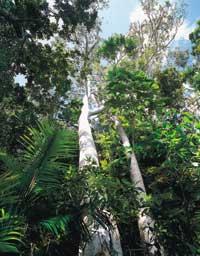
Last month, EU countries met on climate change. Although several points were agreed, the need to approve forests in the Clean Development Mechanism was debated. Meanwhile, the jungles are disappearing. 50% of the world's rainforests are already destroyed: Asia has lost 88% of its natural forests, Africa 45% and South and Central America the same percentage. The pressure on forests is enormous, due to the enormous economic interests that arise. Many countries only have the option of cutting trees if they want to pay the foreign debt. In addition, timber companies have obtained logging permits in at least 11 countries. Although they have denounced all this corruption, several organizations have pointed out that this report is too simple and that the real situation is much tougher: Brazil, for example, has announced that it will only protect 10% of the Amazon rainforest; through the Cameroon jungle a thousand kilometers of oil will pass; in Asia there is little to save...
Published in the supplement Natura de Gara

Gai honi buruzko eduki gehiago
Elhuyarrek garatutako teknologia




